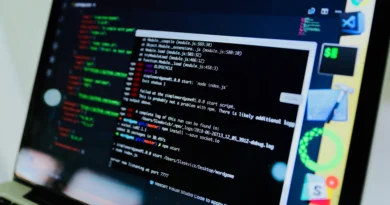Cracking the Code: How AI is Strengthening Cybersecurity Measures
The threat landscape for cyber attacks is constantly evolving in today’s interconnected world. As technology advances, so do the tactics of malicious actors. Organizations are turning to artificial intelligence (AI) to bolster their cybersecurity measures to combat these ever-growing challenges. AI is revolutionizing the field of cybersecurity by providing advanced capabilities for threat detection, prevention, and response. In this article, we will explore how AI is Strengthening Cybersecurity Measures and enabling organizations to stay one step ahead of cyber threats.
AI-powered Threat Detection
AI is strengthening cybersecurity measures by transforming the way threats are detected in cyberspace. Traditional security systems rely on rule-based approaches and signature-based detection methods, which sophisticated attacks can easily bypass. Conversely, AI leverages machine learning algorithms to analyze vast amounts of data and identify patterns that indicate malicious activities.
By continuously learning from new data, AI systems can detect anomalies and deviations from normal behavior, allowing them to identify potential threats in real time. These AI-powered threat detection systems can detect and respond to cyber-attacks faster than traditional methods, significantly reducing the time it takes to identify and mitigate potential risks.
Enhanced Network Security
AI is strengthening cybersecurity measures by playing a vital role in enhancing network security. With the proliferation of connected devices and the Internet of Things (IoT), organizations face the challenge of securing a vast and complex network infrastructure. AI algorithms can analyze network traffic patterns and identify any abnormal activities that may indicate a cyber attack.
By monitoring network traffic in real time, AI systems can detect and respond to potential threats before they cause significant damage. AI can also automate security protocols and response mechanisms, enabling organizations to respond quickly and effectively to emerging threats.
Proactive Threat Prevention
AI is strengthening cybersecurity measures through its ability to prevent cyber-attacks proactively. AI-powered systems can analyze historical data, identify attack patterns, and develop predictive models to anticipate future threats. By analyzing past attack patterns, AI algorithms can identify vulnerabilities in an organization’s security infrastructure and recommend proactive measures to prevent potential breaches.
AI is also strengthening cybersecurity measures by simulating various attack scenarios to test an organization’s defenses and identify potential weaknesses. Organizations can significantly reduce the risk of successful cyber attacks by proactively identifying and patching vulnerabilities.
Also read: Harnessing the Power of Artificial Intelligence for Business Success
Advanced Malware Detection
Malware remains one of the most significant threats to organizations’ cybersecurity. Traditional antivirus software relies on signature-based detection, which sophisticated malware variants can easily evade. AI has introduced a new paradigm in malware detection by leveraging advanced algorithms that can identify and analyze malicious code.
AI is strengthening cybersecurity measures with AI-powered malware detection systems that can analyze the behavior of unknown files and identify potential threats, even if they do not match any known signatures. This dynamic approach enables organizations to detect and mitigate zero-day attacks, previously unknown vulnerabilities that software vendors have not yet patched.
Intelligent User Authentication
AI is strengthening cybersecurity measures by enhancing user authentication systems. Traditional password-based authentication methods are prone to security breaches, as weak passwords and phishing attacks remain prevalent. AI can introduce advanced authentication mechanisms, such as biometrics and behavioral analysis, to verify the identity of users more accurately.
By analyzing user behavior patterns, AI algorithms can detect anomalies that may indicate unauthorized access attempts. Additionally, AI can leverage facial recognition, fingerprint scanning, and voice recognition to provide multi-factor authentication, making it significantly harder for attackers to gain unauthorized access to sensitive systems.
Conclusion
AI is revolutionizing the field of cybersecurity by providing advanced capabilities for threat detection, prevention, and response. AI-powered systems can detect anomalies, enhance network security, and proactively prevent cyber-attacks. Furthermore, AI algorithms can identify and analyze malware, even if they do not match known signatures. Additionally, AI enhances user authentication systems, making it harder for attackers to gain unauthorized access to sensitive systems. As organizations face increasingly sophisticated cyber threats, embracing AI technology is crucial to strengthening cybersecurity measures and ensuring a safe digital environment. With continuous advancements in AI, the future of cybersecurity looks promising, providing organizations with the tools to stay one step ahead of cybercriminals and protect their valuable assets.




